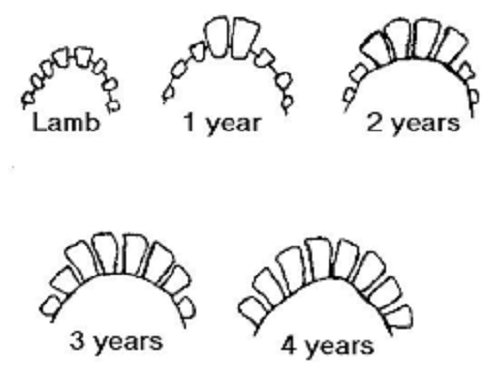The age of your animals can be determined by examination of their front teeth. Although you will not be able to determine the exact age, especially in older animals, a close approximation can be determined. Young animals, like children, have temporary or milk teeth which will be replaced by permanent teeth. Young ruminants have 20 temporary teeth, adult ruminants have 32 permanent teeth.

Temporary (milk) Teeth:
Upper jaw: No front teeth, 6 back teeth. Lower jaw, 8 front teeth, 6 beck teeth
Permanent Teeth
Upper jaw: No front teeth, 12 back teeth. Lower jaw, 8 front teeth, 12 back teeth. \
You will not be able to determine the exact age of the animal from its teeth, there will a difference of a few months either way. You should develop the habit of regularly checking the teeth (not just for age) because bad or worn teeth will stop an animal eating or chewing its cud.
Fun Facts About Goats
The proper name for a group of goats is a trip.
Goats discovered coffee beans.
Goat milk has a higher butterfat content than cow’s milk.
Because they are hearty seafarers, goats were kept by sailors for milk.
Anything you make with cow’s milk you can make with goat’s milk.
Goats were domesticated around 7000 B.C.
Domestic goats are found worldwide.
Pygmy goats are a goat species, not a breed.
Goats are great swimmers.
Baby goats are kids, males are bucks, females are called does.
A domestic male is sometimes called a billy, a female, a nanny.


Comment here